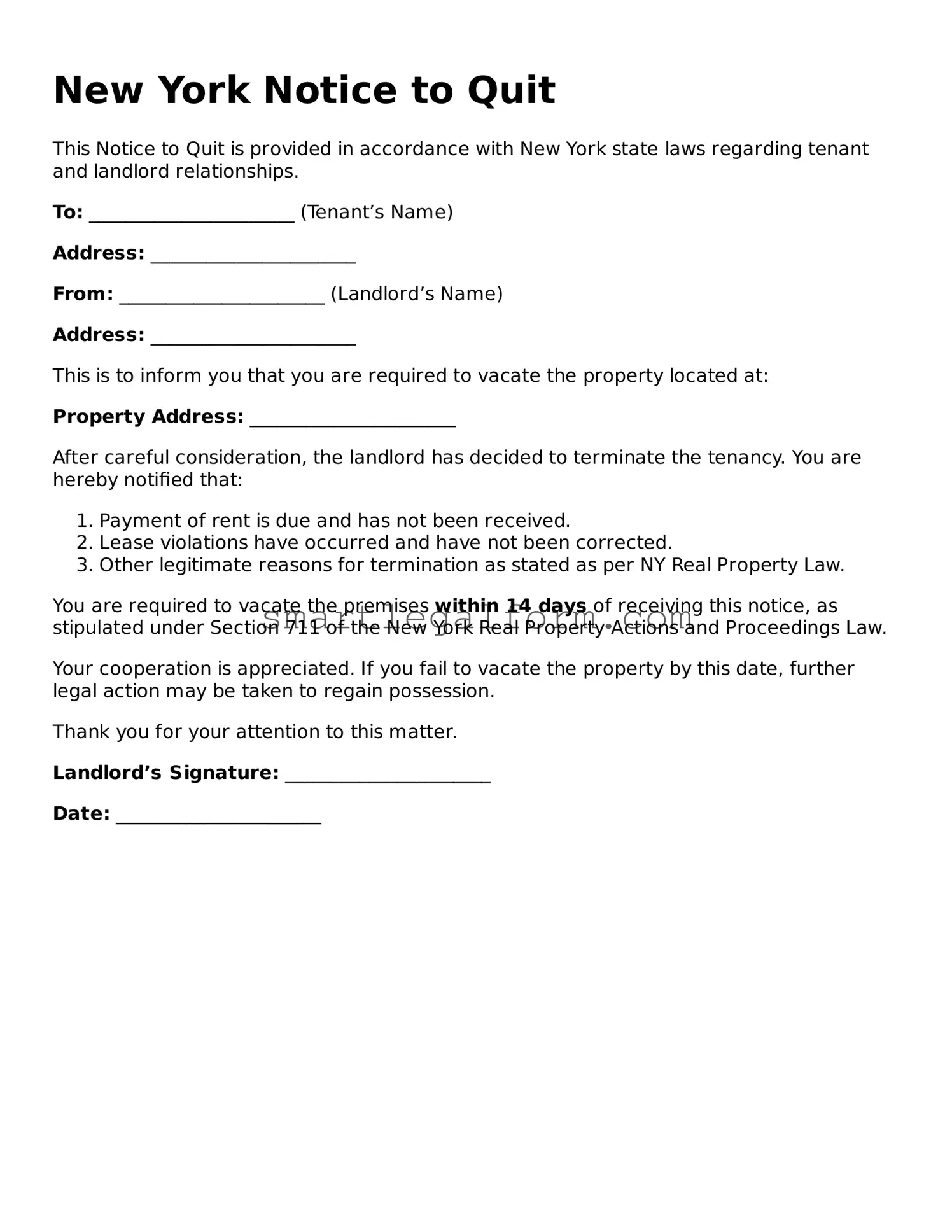Printable New York Notice to Quit Document
The New York Notice to Quit form is a legal document used by landlords to formally notify tenants of their intention to terminate a lease agreement. This notice outlines the reasons for eviction and provides a specific timeframe for the tenant to vacate the property. Understanding this form is crucial for both landlords and tenants to ensure compliance with state laws and protect their rights.
Ready to take the next step? Fill out the form by clicking the button below.
Fill Out Your Form Online
